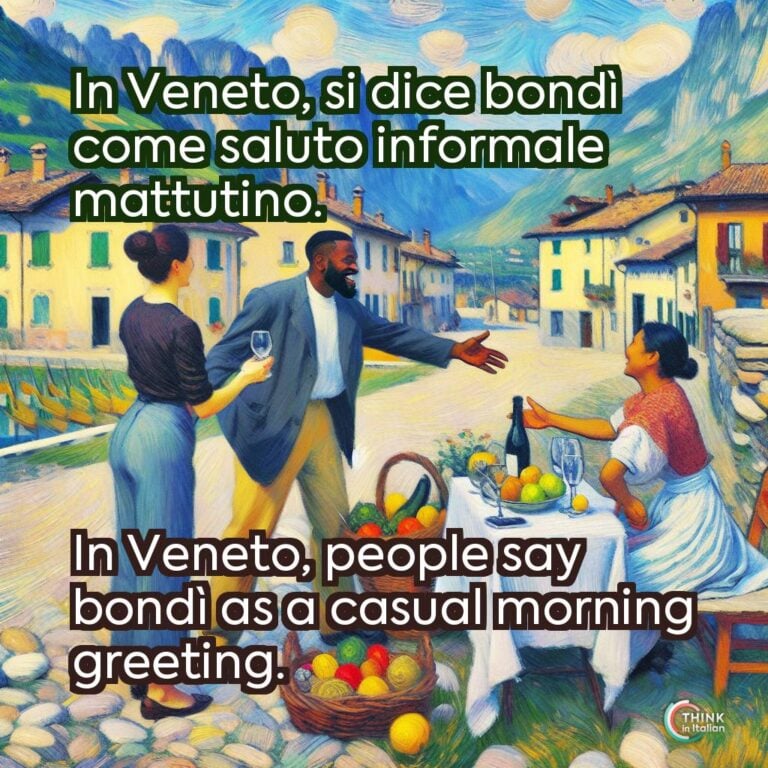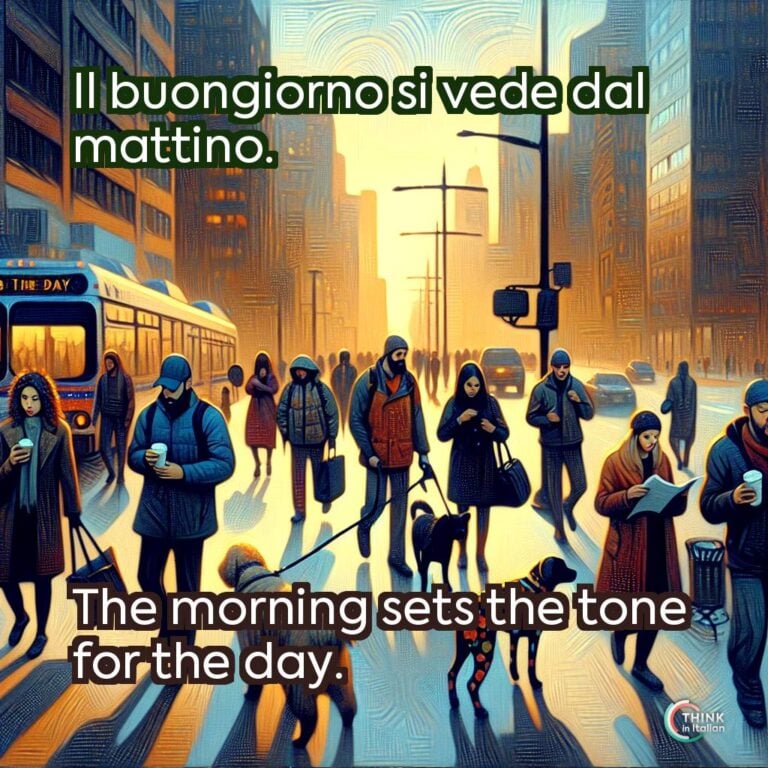How to Say “Good Morning” in Italian
Buongiorno
As easy as it is, “good morning” in Italian is buongiorno, which is structurally the same as in English: the adverb buon meaning “good” and giorno literally meaning “day”.
It is one of the most basic Italian words that you must know if you want to start learning the language, and throughout this article you will find out why.
Buon Pomeriggio
After noon, Italians might alternate the use of buongiorno with that of buon pomeriggio. Buon pomeriggio literally means “good afternoon” in Italian, and is used, indeed, after noon.
However, there is no written rule regarding the moment when someone should switch to another type of greeting. This is why you will probably hear buongiorno extended to later times.
Be careful thought! Do not use these words too late during the day. At some point, I would say around 5 or 6 p.m., it is time to say buonasera (good evening)
How to Use “Buongiorno”
“Buongiorno” in Daily Life
Buongiorno can be used a bit differently depending on the context. If you’re casually catching up with a friend, it’s easy and cheerful, but in a more formal setting like the workplace, it becomes a professional nod to a colleague.
There’s also a delightful variation I love, buona giornata, which translates to “have a good day”, which I like using when I am leaving a place. In fact, while buongiorno is a greeting, buona giornata is a wish for the rest of the day to go well.
This is an example of a standard interaction in Italy:
Buongiorno, come stai?
Good morning, how are you?
Bene, grazie. Tu?
Good, thanks. You?
Anche io sto bene, grazie!
I am also good, thanks!
Buona giornata!
Have a good day!
Anche a te!
You too!
Learn how to use the most basic Italian phrases to start interacting with Italian native speakers, and you will see the fastest improvement ever!
Regional Variations
Italy is well known for its diversity of regional dialects and traditions, which extends to morning greetings as well.
For example, in Sicily, you might hear bon jornu instead of the standard Italian buongiorno, while in the Veneto region, locals might say bondì as a casual morning greeting.
These regional distinctions are not just linguistic curiosities, but they represent the deep cultural histories and identities that define different parts of Italy.
What I also find interesting is how greetings might change depending on the register of the conversation. When I greet my parents or my friends, I’d rather say giorno (translated literally into “day”), making it shorter yet effective.
Master Italian Greetings
If you’re learning Italian, incorporating buongiorno into your everyday life is a small but significant step in understanding Italian culture.
At its core, buongiorno isn’t just a phrase, it’s a mindset. By using it daily, you’re inviting warmth and positivity into your life, just like the Italians do every morning.
Whether it’s at the coffee shop or with friends, you’ll find that it’s not only fun but also a wonderful and effortless way to share a positive vibe and bring some Italian style into your day.
So, why not make buongiorno a personal ritual? After all, every day starts better with a little Italian sunshine.






